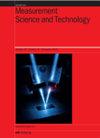基于混频非线性超声参数的氮化层深度检测
IF 3.4
3区 工程技术
Q1 ENGINEERING, MULTIDISCIPLINARY
引用次数: 0
摘要
氮化处理可以改善工件的表面性能,从而提高工件的使用寿命。氮化层深度不仅是评价氮化效果的重要指标之一,也是影响工件最终使用性能的重要因素。现有的硬度和金相方法无法满足轴类零件氮化层深度无损检测的需要。因此,提出了一种利用非线性超声波检测技术对氮化层深度进行无损评估的方法。本研究采用液态盐浴氮化法制备了不同氮化层深度的 1045 钢轴试样。使用显微硬度计测量氮化层的总深度,并使用金相显微镜观察氮化处理前后的微观结构变化。利用所提出的非破坏性方法,建立了纵向临界折射(LCR)波混合检测模型,并利用超声非线性系数来表征氮化层深度。实验结果表明,超声非线性系数的 LCR 波和频率(LCRWSF)检测模型能更好地表征 1045 钢的氮化层深度,灵敏度更高。因此,LCRWSF 模型更适合有效估算氮化层深度。本文章由计算机程序翻译,如有差异,请以英文原文为准。
Nitriding layer depth detection based on mixing frequency nonlinear ultrasonic parameters
Nitriding treatment can improve the surface properties of workpieces, thus increasing the service life of the workpiece. The depth of nitriding layer is not only one of the important indexes for evaluating the nitriding effect, but also an important factor affecting the end-use performance of the workpiece. While the existing hardness and metallographic methods cannot meet the needs for non-destructive testing of nitriding layer depth in shaft parts. Therefore, a method using non-linear ultrasonic testing technology is proposed for non-destructive evaluation of nitriding layer depth. In this study, 1045 steel shaft specimens with different nitriding layer depths were prepared by a liquid salt bath nitriding method. The total depth of the nitriding layer was measured using a microhardness tester, and metallographic microscopy was applied to observe microstructure changes before and after nitriding treatment. With the proposed non-destructive method, the longitudinal critically refracted (LCR) wave mixing detection model was established and the ultrasonic nonlinear coefficients were used for characterizing the nitrided layer depths. Experimental results show that the LCR wave sum frequency (LCRWSF) detection model of ultrasonic nonlinear coefficient is better to characterize the nitriding layer depth of 1045 steel and have higher sensitivity. As a result, the LCRWSF model is more suitable to efficiently estimate the nitrided layer depth.
求助全文
通过发布文献求助,成功后即可免费获取论文全文。
去求助
来源期刊

Measurement Science and Technology
工程技术-工程:综合
CiteScore
4.30
自引率
16.70%
发文量
656
审稿时长
4.9 months
期刊介绍:
Measurement Science and Technology publishes articles on new measurement techniques and associated instrumentation. Papers that describe experiments must represent an advance in measurement science or measurement technique rather than the application of established experimental technique. Bearing in mind the multidisciplinary nature of the journal, authors must provide an introduction to their work that makes clear the novelty, significance, broader relevance of their work in a measurement context and relevance to the readership of Measurement Science and Technology. All submitted articles should contain consideration of the uncertainty, precision and/or accuracy of the measurements presented.
Subject coverage includes the theory, practice and application of measurement in physics, chemistry, engineering and the environmental and life sciences from inception to commercial exploitation. Publications in the journal should emphasize the novelty of reported methods, characterize them and demonstrate their performance using examples or applications.
 求助内容:
求助内容: 应助结果提醒方式:
应助结果提醒方式:


